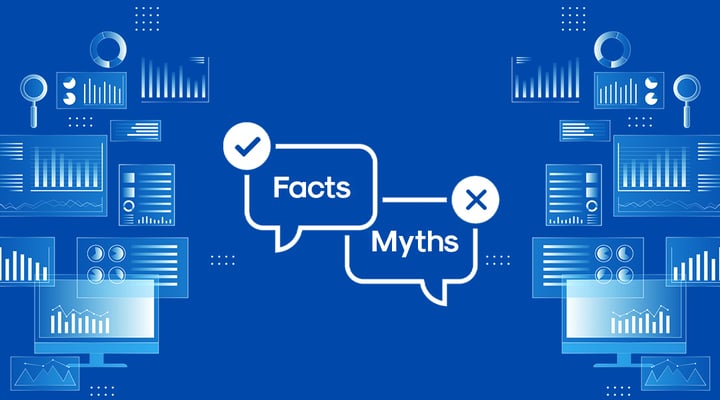
Your business may be crazier than ever. The economic turmoil has forced plumbing, HVAC, electrical, and mechanical contractors to take full stock of their job pipeline and skilled workforce, and many things have changed as inflation has risen.
What has not changed is that your business is oriented toward making a profit. Here are five of the most common reasons business owners and operations managers don’t want to change anything right now, and some reasons why doing nothing might be handicapping your business.
1. We’re swamped with business.
Great! You’re busier than ever. That means more revenue, which requires a lot more dispatching, estimating, customer service, more hours for your people, and potentially more profit.
But how are you going to fit more activity into your current systems? If you are working with inefficiencies today, like manual paperwork, unplanned overtime, unplanned trips, and manual invoicing and payroll processes, expect those inefficiencies to be magnified.
Now more than ever, it makes sense to focus on evaluating and piloting integrated platforms to eliminate manual and dual entry of information, put your office, field, and customers on the same page, streamline operations, and empower your field techs to do more in the same amount of hours.
Read More: Uncovering the Hidden Costs of Patchwork Processes
2. New technology is hard to implement and use.
You’ve done software. But the last time you tried to install new stuff, you ran into problems. It took time to get things working. It slowed you down. This is a common experience. The root cause isn’t your company, nor is it always the software vendor. It boils down to three things: lack of planning, lack of project management, and poor onboarding support.
Work with a vendor who specializes in your industry. Some software offerings try to serve all industries, while IndusTrack concentrates on its top commercial. customer industries: plumbing, HVAC, electrical, and mechanical.
We’ve done this for a long time now, so we have prepared checklists for what you need to do before you log in for the first time and while you onboard. We also migrate your electronic customer data for you, so you’re never starting with a blank slate. If you’re all paper, we even have solutions to get the info out of file cabinets and onto your screen.
We recommend phased rollouts. That means you don’t start using every feature all at once – only adapt as you need to. Our dedicated onboarding staff has several years of experience guiding customers to ramp up quickly. Change is uncomfortable, but that’s where the greatest growth starts.
Read More: Benefits of Implementing a Great Field Service Management Software
3. We’re growing and taking on lots of new people and/or business.
Adding new people and new lines of business is always stressful. It may seem like the wrong time to change how you do things. However, at the same time, if you have inefficiencies and your processes result in lots of unplanned costs, you’re training people to continue down a broken path.
Meanwhile, your competitors may already have a working Field Service Management platform in place and they’re either ramping up or rolling it out to everyone so that they can optimize operations, improve communications, accelerate job completion, and be more proactive with customers.
This is the time to really invest in your people: by giving them better tools, you’re empowering them to do better work and please customers. Your field techs are the brand ambassadors for the company. Teaching them a new, better, integrated system that gives them better communication and easier job management will lead to a better customer experience.
4. Our technicians will have a hard time with any new technology.
We’ve literally heard people say, “Our techs are dinosaurs,” and, “They’re still using flip phones, I don’t know how we’re going to get them onto this stuff.” Similar objections happened when companies transitioned from pagers to mobile phones. There were concerns about consuming airtime minutes and the cost to replace damaged or lost devices.
By the late 1990s, the efficiency of speaking in real-time with the field — especially during a crisis of any kind — erased those concerns. Like the best smartphones, good software is intuitive and easy to learn. IndusTrack built its user interfaces and processes based on the best vendor tools and feedback from customers. If your people are still using flip phones, buy tablets or iPads for use in the field. The minor acquisition cost pales in comparison to the boost to efficiency and revenue.
By letting tech laggards dictate the speed at which you grow the business, you’re suffering opportunity costs. More efficient operations, accomplishing more jobs in the same work week, being able to easily locate techs, trucks, and inventory, and making investments in your whole team. Tech-savvy employees are scratching their heads wondering “when you’ll automate this stuff.”
Read More: Empower Field Technicians: An All-in-One Mobile Tool for Commercial Contractors
5. There’s too much uncertainty in the market right now.
Last but not least, we don’t know what will happen tomorrow. We don’t know what’s going to happen to certain business or consumer markets after this or that election. We don’t know what our competitors or our customers are going to do. All we can control is what we do with our business.
That’s true almost all the time. In order to maintain control of your business and emerge from uncertainty unscathed, you need to take a stand against the factors that hold you back. An integrated field service management system is a great way to boost efficiency, optimize margins, and improve customer satisfaction all at once. Don’t wait for circumstances to improve before making decisions that will set your company up for success.



